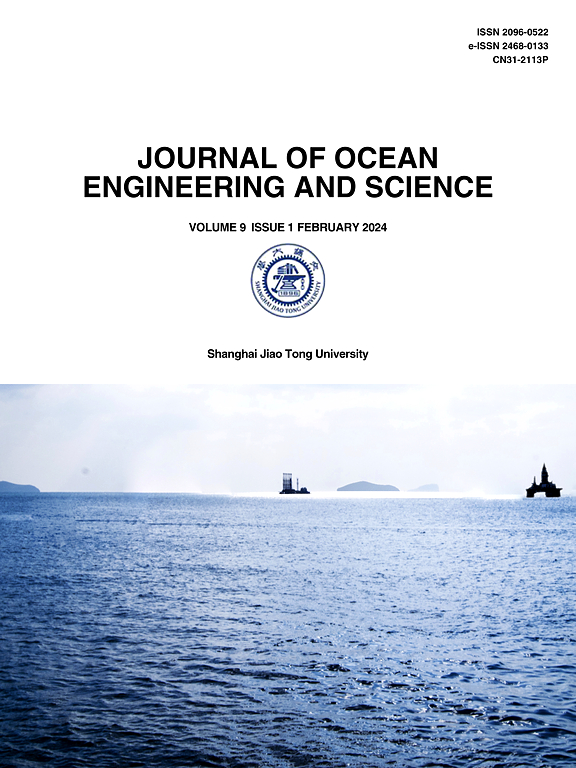北美东海岸近海的风浪陡度
IF 11.8
1区 工程技术
Q1 ENGINEERING, MARINE
引用次数: 0
摘要
北大西洋(27.46 N < late <; 43.53 N和62.03 W < lon < 80.19 W)的风浪陡度是基于最多37年(1984年至2020年)的浮标测量来表征的。波浪数据来自16个国家数据浮标中心(NDBC)和2个海洋环境数据站(MEDS),分布在33米至5394米的深度。分析了全谱波陡度(sm)和风海陡度(smw)的年内变率。在18个地点中,平均sm和smw分别在0.023 ~ 0.037和0.025 ~ 0.039之间。结果表明,不同浮标间的年际变化相似,月平均最大值出现在1 - 2月(0.029 <sm< 0.045, 0.030 < smw < 0.048),最小值出现在7 - 8月(0.018<sm<0.033, 0.019 < smw < 0.035)。各台站的sm/smw概率分布函数在0.9 ~ 1.0之间出现峰值。研究还发现,具有最大sm和smw的海况与显著波高的最大事件没有直接联系。实际上,这些发现可以为各种海洋工程的实施以及航行风险的确定提供信息,因为波浪陡度对海洋环境中的几个物理过程产生重大影响。本文章由计算机程序翻译,如有差异,请以英文原文为准。
Wind-wave steepness offshore the North American east coast
Wind-wave steepness along the North Atlantic (27.46 N < lat < 43.53 N and 62.03 W < lon < 80.19 W) is characterized based on at most 37 years (1984 to 2020) of buoy measurements. Wave data from 16 National Data Buoy Center (NDBC) and 2 Marine Environmental Data Section (MEDS) stations located at depths ranging from 33 m to 5394 m are used. Intra-annual variability of the full spectrum wave steepness (sm) and the wind-sea steepness (smw) are analyzed. Among the 18 locations, the average sm and smw ranged between 0.023 to 0.037 and 0.025 to 0.039, respectively. Results show similar intra-annual variability among the different buoys both for sm and for smw with monthly average maximums occurring between January and February (0.029 < sm < 0.045, 0.030 < smw < 0.048) and minimums between July and August (0.018<sm<0.033, 0.019 < smw < 0.035). The probability distribution function of sm/smw presents a peak between 0.9 and 1.0 for all stations. It is also found that the sea states with the maximum sm and smw are not directly linked to the maximum events of significant wave height. Practically, these findings can inform the implementation of various ocean engineering endeavors as well as navigation risk determination, as wave steepness exerts a significant influence on several physical processes in the marine environment.
求助全文
通过发布文献求助,成功后即可免费获取论文全文。
去求助
来源期刊

Journal of Ocean Engineering and Science
Multiple-
CiteScore
11.50
自引率
19.70%
发文量
224
审稿时长
29 days
期刊介绍:
The Journal of Ocean Engineering and Science (JOES) serves as a platform for disseminating original research and advancements in the realm of ocean engineering and science.
JOES encourages the submission of papers covering various aspects of ocean engineering and science.
 求助内容:
求助内容: 应助结果提醒方式:
应助结果提醒方式:


